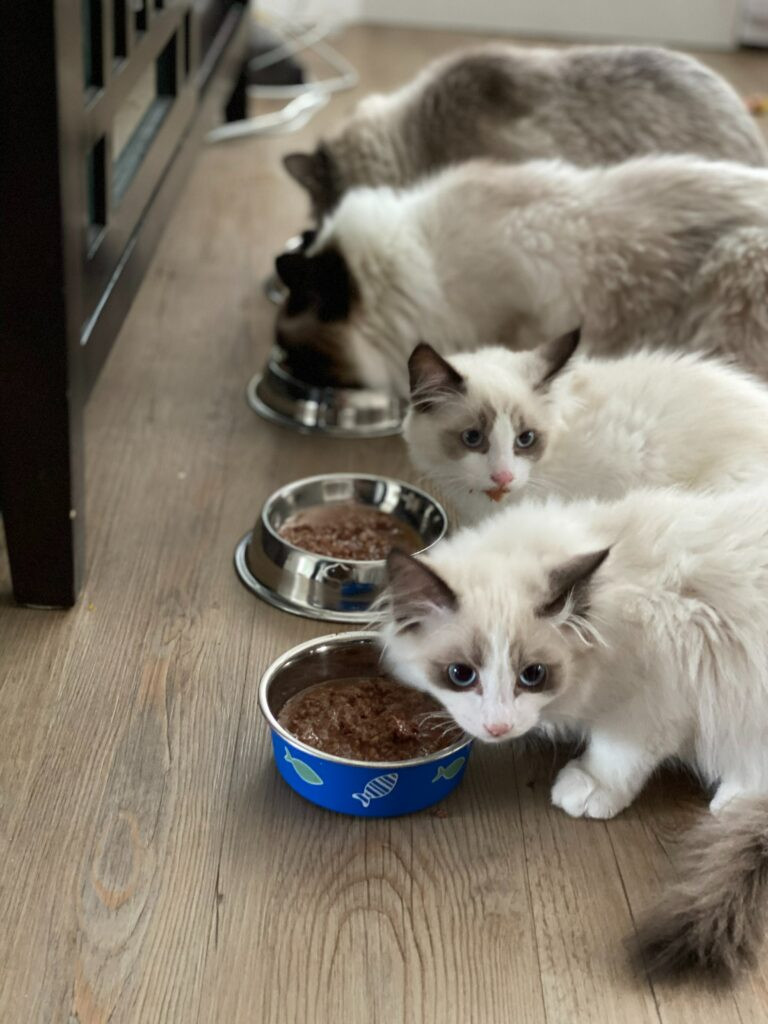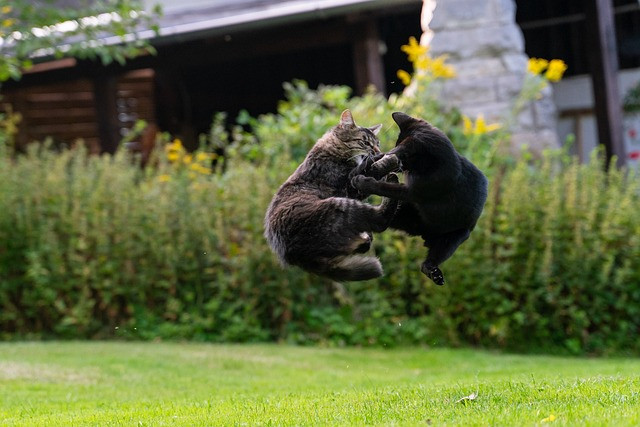Life with multiple cats can be a joy, filled with purrs, cuddles, and the delightful sight of feline companions entertaining each other. However, this idyllic picture can be shattered by the disruption of cat fights. Even cats that have coexisted peacefully for years can suddenly turn on each other, and the reasons behind these clashes can be perplexing to owners.
You might witness the event that triggers the first fight, or it might occur out of the blue. Sometimes, the cause might seem insignificant, something you wouldn’t expect to disrupt feline harmony.
A common scenario that cat owners often face involves two cats who have enjoyed years of peaceful coexistence. Suddenly, one cat needs a trip to the veterinarian for a routine check-up, a dental procedure, or any other health concern. Upon returning home, this cat may act slightly different, which is understandable given the stress of a vet visit. (Remember, regular vet check-ups are crucial for your cat’s health!)
For a while, the cats might seem fine, or conflict may arise immediately. Eventually, a fight erupts, and you’re forced to intervene and stop the cat fight. In that moment, the relationship between the cats can fracture. Cats that once lounged and played together now can’t share the same space without tension. Even when they are in the same room, they may appear more stressed and their usual comfortable dynamic is gone.
 Four white cats eat out of four bowls.
Four white cats eat out of four bowls.
Witnessing former feline friends become adversaries is incredibly stressful for cat owners. You long to see your beloved cats return to their amicable relationship and not constantly worry about potential aggression. You might wonder if life will ever return to normal.
Understanding the Root Causes of Cat Fights
While various factors can trigger cat fights, the scenario described above often stems from a phenomenon called feline non-recognition aggression, where cats fail to recognize each other. This might seem strange to humans, but scent plays a vital role in feline recognition. When a cat returns from the vet smelling and behaving differently due to stress or unfamiliar scents picked up at the clinic, their housemate might perceive them as a stranger.
Cats are inherently territorial, and the introduction of unfamiliar cats into their territory is often met with suspicion and hostility. One cat, feeling threatened by this “unfamiliar” scent, might act defensively. The other cat, perhaps initially confused but now feeling threatened by the aggression, becomes fearful and reactive whenever they encounter their former companion.
In other instances, cats might never have truly gotten along in the first place. This could be due to personality clashes or improper initial introductions. Fear builds between them, and each fight reinforces this negative association.
 Two cats fighting while flying through the air.
Two cats fighting while flying through the air.
Sometimes, fights arise from misinterpreted scary events. For instance, if a loud noise like a dropped pan startles one cat, and they happen to be near another cat, they might misattribute the fear to the nearby cat. In their heightened state of anxiety, they might lash out at their housemate as a perceived source of stress relief or misdirected aggression.
Steps to Take When Your Cats Are Fighting
When cat fights erupt, your immediate instinct is likely to restore peace and normalcy in your home. While some minor disagreements might resolve themselves without much intervention, persistent cat conflict often requires a more structured approach. To help your cats regain their friendly dynamic, you might need to undertake a process known as reintroduction.
Understanding Cat Reintroductions
Reintroductions are systematic methods designed to retrain cats to perceive each other not as threats, but as neutral or even positive presences. When executed correctly, reintroductions are often successful, although they can be lengthy, sometimes taking months to achieve significant improvement. The more negative interactions the cats have experienced, the more challenging the reintroduction process can become. In some unfortunately severe cases, complete reconciliation might not be possible, and rehoming one of the cats might become the most compassionate option.
Reintroductions essentially involve repeating the steps of initial cat introductions, but with greater precision and a slower pace. Crucially, complete separation of the cats is necessary throughout the process, except during carefully controlled reintroduction sessions.
Given the time commitment and emotional toll reintroductions can place on cat owners, navigating this process alone can be daunting, even with a reliable guide. Fortunately, experienced cat behaviorists can provide invaluable support. Reintroductions are, in fact, the most frequent reason why owners seek professional help with their cats. If you are committed to resolving the conflict and willing to invest the effort, professional guidance can significantly increase your chances of success.
Exploring Alternatives to Reintroduction
If a full reintroduction feels overwhelming initially, several steps can be taken to mitigate cat fighting. While their success rates vary, these alternatives are worth considering. And if you’re unsure whether a reintroduction is necessary for your fighting cats, seeking advice from a behavior consultant is always a good first step.
You may have encountered recommendations for pheromone diffusers. While generally harmless, their effectiveness in resolving established cat fights is often limited. Feel free to try them, but manage your expectations.
Addressing the Underlying Cause
Identifying and resolving the root cause of the conflict is paramount. Try to address the problem without resorting to aversive methods like squirt bottles, which can actually increase fear and worsen aggression. For instance, if competition over a favorite cat tower is triggering fights, providing a second cat tree can alleviate resource guarding. While this might prevent future fights, addressing the existing damage to their relationship might still require further intervention.
Temporary separation can also be a useful diagnostic tool and short-term solution. Separating the cats for a few hours or even a couple of days can provide valuable insights. During separation, ensure each cat has all their essential needs met in their respective spaces. Complete visual separation is crucial during this time. You might need to use an under-door draft guard to prevent paw-swatting under doors or window film to block sight lines through windows.
Actions to Avoid When Cats Fight
Certain approaches to cat fighting are counterproductive and should be avoided. While past advice might have suggested letting cats “fight it out,” this is now recognized as detrimental. Cats are unlikely to resolve serious conflict independently, and this approach risks injuries and escalates aggression. Active intervention is always preferable to letting fights run their course.
Contrary to some online advice, feeding cats close together is not an effective solution for inter-cat aggression and is not recommended in the latest AAFP guidelines on intercat tension. While positive associations are beneficial, cats generally prefer to eat separately. Forced proximity during meals can actually increase stress and tension. Cats might tolerate each other for food, but underlying animosity will likely persist. It’s best to skip this method as it is not helpful and could be harmful.
If your cats are actively engaged in a fight, prioritize safely breaking up the cat fight without putting yourself at risk of injury. Avoid placing your hands directly between fighting cats, as this is a sure way to get bitten by a cat.
Hope for Harmony in Multi-Cat Homes
“Is there hope for my fighting cats?” This is the most common question from concerned cat owners seeking help. While various factors influence the likelihood of restoring peace, there is often hope for cats to at least learn to tolerate each other, provided you have realistic expectations about the timeline. Sometimes, with environmental adjustments and patience, the situation improves naturally. More often, active intervention and management are necessary. In many cases, with dedication and patience, you can transform a home filled with the sounds of cat hissing and aggression into a more harmonious multi-cat household.
Need Expert Help with Your Fighting Cats?
Schedule a Behavior Consultation


